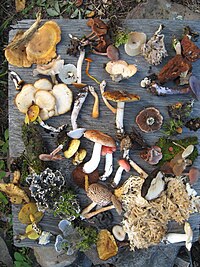
Photo from wikipedia
Human disturbance can promote hybridization either by enhancing opportunities for interspecific mating (e.g., by homogenizing habitat, introducing closely related species, or disrupting mating cues) or by modifying the relative fitness… Click to show full abstract
Human disturbance can promote hybridization either by enhancing opportunities for interspecific mating (e.g., by homogenizing habitat, introducing closely related species, or disrupting mating cues) or by modifying the relative fitness of hybrids and parental species so hybrids are at an advantage in some environments. However, despite this clear link between anthropogenic disturbance and potential for increased hybridization, few empirical studies have shown clear causal relationships at scale, across replicate locations where hybridization occurs. In a new paper, combine a detailed genomic and phenotypic study of chickadee hybridization with a large, geographically distributed citizen science dataset from eBird to infer patterns of hybridization. They modeled hybridization outcomes as a function of a standardized metric of disturbance, and found a positive association of hybridization with human disturbance. In this commentary, we highlight the exciting aspects of this new work, and discuss what advances are needed to better connect hybridization outcomes to anthropogenic disturbance in diverse study systems. We highlight a role for broad geographic and genomic sampling, and the need for new statistical methods to explicitly test hypotheses about anthropogenic hybridization. We also emphasize that prediction of hybridization outcomes is likely to be difficult, and that caution and proper quantification of uncertainty will be critical to success.
Journal Title: Global Change Biology
Year Published: 2022
Link to full text (if available)
Share on Social Media: Sign Up to like & get
recommendations!